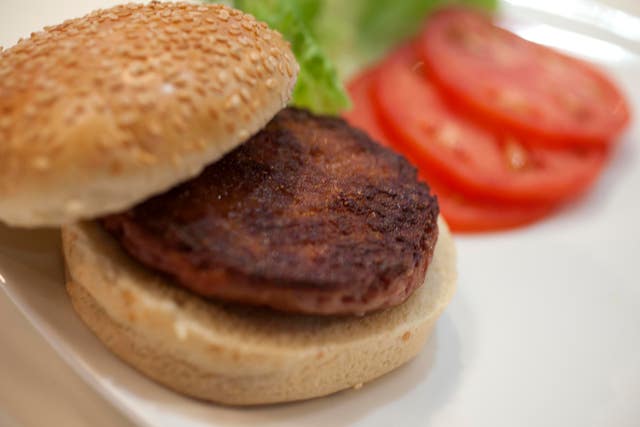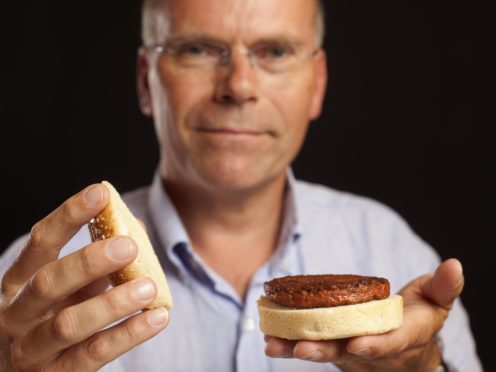A Dutch company that presented the world’s first lab-grown beefburger five years ago has said it has received funding to pursue its plans to make and sell artificially grown meat to restaurants from 2021.
Mosa Meat said it raised 7.5 million euros (£6.7 million), mainly from M Ventures and Bell Food Group.
M Ventures is an investment vehicle for German pharmaceuticals company Merck KGaA.
Bell Food is a European meat processing company based in Switzerland.
We’re announcing a €7.5M Series A investment from Merck Ventures, Bell Food Group and others to create the future of meat. Learn more:https://t.co/bu27Bg8L7c pic.twitter.com/zhchbm9OlS
— Mosa Meat (@mosa_meat) July 17, 2018
Smaller investors include Glass Wall Syndicate, which supports several companies looking into cultured meat or meat substitute products aimed at consumers concerned about the environmental and ethical impact of raising and slaughtering animals.
Maastricht-based Mosa Meat, which has in the past also received one million euro (£890,000) from Google co-founder Sergey Brin, said it hopes to sell its first products, most likely ground beef for burgers, in 2021.
The aim is to achieve industrial-scale production two to three years later, with a typical hamburger costing about one dollar.

Environmentalists have warned that the world’s growing appetite for meat, particularly in emerging economies such as China, is not sustainable because beef, pork and poultry require far greater resources than plant-based proteins.
Cows in particular also produce large amounts of greenhouse gas that contribute to global warming.
The big challenge is making meat that looks, feels and tastes like the real thing.
Mosa Meat uses a small sample of cells taken from a live animal.

Those cells are fed with nutrients so that they grow into strands of muscle tissue.
The company claims it could make up to 80,000 quarter pounders from a single sample.
With a number of startups and established players hoping to make cultured meat on a big scale in the coming years, a battle has broken out over the terms used to describe such products.
Some advocates have claimed the term “clean meat” while opponents in the traditional farm sector suggest “synthetic meat” is more appropriate.
